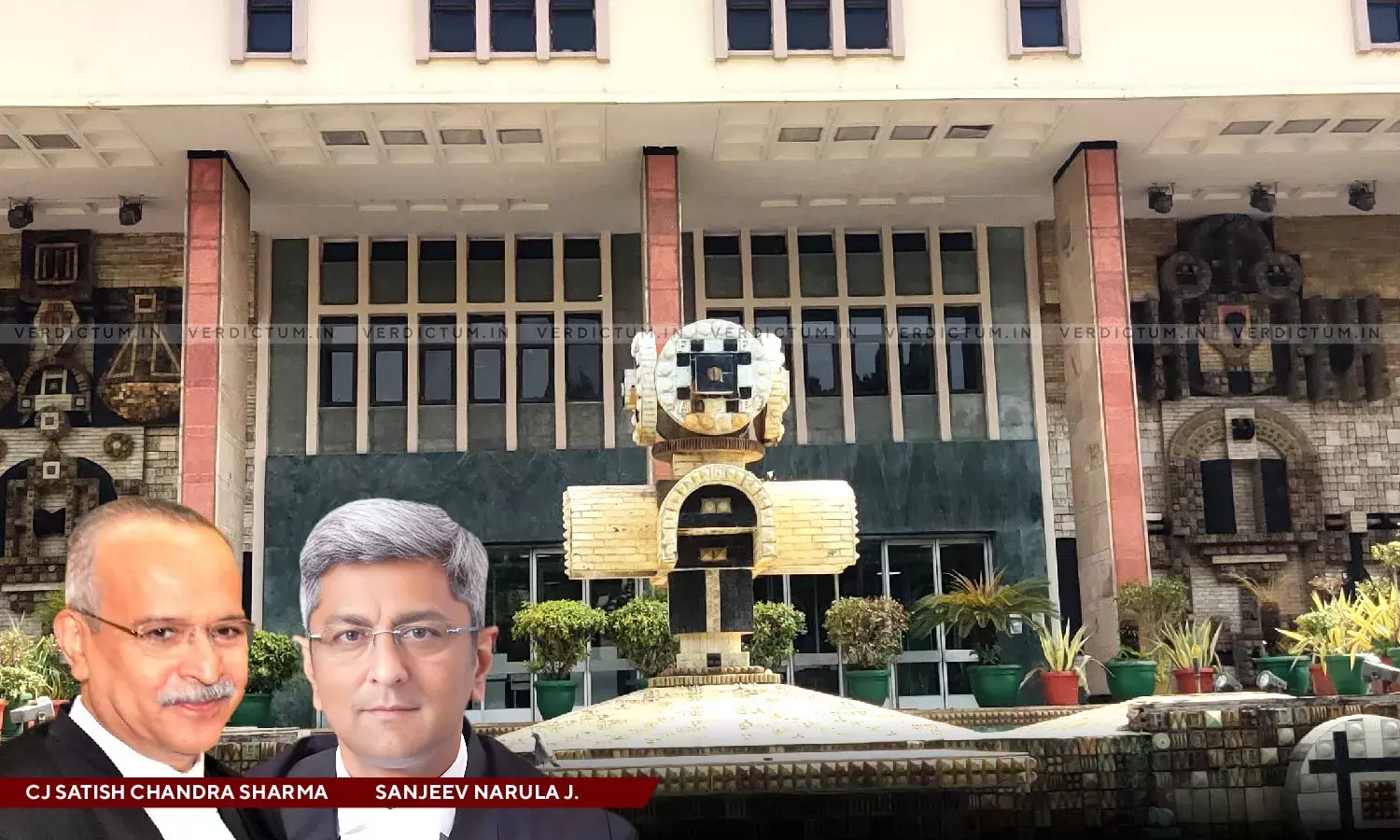NCRTC Has Committed To Mitigate Construction Impact Of Delhi-Meerut RRTS Via Siddhartha Extn: Delhi HC Dismisses Residents' PIL

The Delhi High Court has observed that the National Capital Region Transport Corporation (NCRTC) has committed to reducing the impact of the construction of the Delhi Meerut Semi-High-Speed Rail Corridor on residents of Siddhartha Extension.
The Court dismissed a Public Interest Litigation (PIL) filed by the residents of Sidhartha Extension Residents. The residents had expressed concern that the switching of the proposed route plan from option 1 to option 3 was arbitrary and would severely impact their lives and well-being. The Court emphasized that the NCRTC is a specialized government entity with extensive experience executing complex infrastructure projects.
The Bench comprising Chief Justice Satish Chandra Sharma and Justice Sanjeev Narula noted, “It is also worth noting that NCRTC is not a novice in the field, but is a specialized government entity with extensive experience in executing complex and heavy infrastructure projects. They have a robust safety mechanism in place to monitor, supervise, and direct construction activities. This adds an additional layer of assurance that construction will be conducted in a manner that prioritizes both, safety and environmental concerns. NCRTC has demonstrated a commitment to mitigating the impact of construction on the well-being of Siddhartha Extension residents; they have devised a comprehensive approach to construction that would ensure speed and safety”.
Senior Advocate Kirti Uppal appeared for the Petitioners, and Standing Counsel Rajesh Katyal appeared for the Respondents.
The Sidhartha Extension Pocket C Residents Welfare Association (Sidhartha Association) filed a Public Interest Litigation concerning the development of the Delhi-Meerut Regional Rapid Transport System (RRTS). This semi-high-speed rail corridor aimed to create better connectivity between Delhi, Ghaziabad, and Meerut. The Petitioners contended that the authorities' decision to switch from the original route plan, Option 1, to an alternative route, Option 3, seemed to lack proper justification and was arbitrary. This change could negatively affect the quality of life and well-being of the residents in Siddhartha Extension.
The Court noted that the government considered different options for aligning the viaduct of the RRTS and came up with three potential options. Option 1 bypasses Pocket C of Siddhartha Extension, Option 2 runs through it and affects 24 flats, while Option 3 cuts through the Siddharth Extension colony and affects only 8 flats. The alignment options underwent a thorough evaluation process by experts, and Option 3 was the best choice. It minimizes the number of flats affected and offers a cost-effective approach compared to the other options. The Court observed that the pillars for Option 3 have been carefully positioned to avoid interfering with roadways, parking, and accessible spaces. This option has the least impact on residents and is technically feasible and economically prudent. The Court held that the decision to forego Option 1 is based on valid technical and social considerations, and the chosen alignment is not random but grounded in technical viability, cost-efficiency, and societal gains.
Additionally, the Bench noted that when weighing the rights of an individual property owner against the greater good of the public, the latter should be given priority. The Bench observed that the decision should benefit the community as a whole and make the most effective use of public resources.
“Public interest stands at the forefront of this project, given its significant benefits such as reducing air pollution, alleviating traffic congestion, and offering a more efficient transportation system. Additionally, the project promises substantial environmental benefits, as indicated by the Detailed Project Report, including significant reductions in annual emission rates of particulate matter, nitrogen oxide, hydrocarbons, and carbon monoxide. Thus, in the act of balancing individual property rights and overarching public interest, the latter must take precedence. The scale tips in favour of a solution that serves the larger community, and ensures the most efficient use of public resources”, the Bench noted.
The Court noted that NCRTC has developed a comprehensive approach to construction to ensure speed and safety. Additional resources have been allocated for construction within the society's boundaries to ensure its expeditious completion.
The Bench observed that NCRTC’s measures are not just preventative but a proactive strategy to ensure the general public's safety from any construction-related hazards. Overall, the Court held that these actions show that NCRTC is conscientiously balancing the need for public infrastructure development with the well-being and concerns of impacted residents.
Cause Title: Sidhartha Extension Pocket C Residents Welfare Association & Anr. v Union Of India & Ors.

